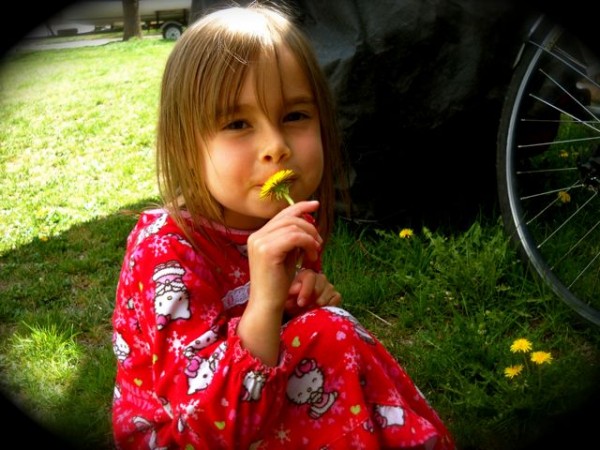Like so many things, my precious Rinpoche of a daughter, Dewachen, has taught me to embrace,
accept, and benefit from…well, Weed Beings.
Most Noble Sangha,
some of you may recall when i lived in Flagstaff, i was like the Dandelion Nazi…determined to purge my
yard from the resilient weedy beasts…
well, like so many of the work in Wholistic Fitness™….the years have softened me…and my attitude, inviting yet another transformation along the Way toward Wholeness…
for now, instead of killing, extracting, and stressing about all the Dandelions in my Durango yard,
i’ve found yoga (union) with them…
ilg and my clan now Love them,
we eat them,
we make bouquets from them…
and we attend Durango’s yearly Dandelion Festival to intensify our appreciation of this
most precious creation…
enjoy this video from my friend at Harmony Hikes,
have the recipe enclosed, and
may all of you too,
become a fan of this Dandy of a Lion…
http://www.nextworldtv.com/videos/health-and-wellness/eating-dandelions.html
all things change
especially our resistances
to what Is
when we learn to Accept…
ever learning,
your feeble teacher


 These teachings are the "Rasas" or "sap" of Wholistic Fitness. You’ll find insights to ponder, student chi to keep your own chi topped off, and plenty of proven training techniques to test on your own body, mind, and spirit! Also, you’ll find my very popular Race Reports, and news of our Sangha’s (community’s) latest transpersonal fitness adventures!
These teachings are the "Rasas" or "sap" of Wholistic Fitness. You’ll find insights to ponder, student chi to keep your own chi topped off, and plenty of proven training techniques to test on your own body, mind, and spirit! Also, you’ll find my very popular Race Reports, and news of our Sangha’s (community’s) latest transpersonal fitness adventures!
From Karen McKinnis:
Dandelion wine … nector of the gods
Dandelions are in season during the spring and summer months, but they lend themselves deliciously to a beverage you can serve year-round. April and May are the best months to harvest dandelions for the purpose of wine making in the Norther…n hemisphere. Try it out, and taste it for yourself.
Dandelion wine:
1 package (7 g) dried brewing yeast
1/4 cup (60 mL) warm water
2 quarts (230 g) whole dandelion flowers
Using 2 quarts+ of just the petals can make for a less bitter wine.
4 quarts water (3.785 L)
1 cup (240 mL) orange juice
3 tablespoons (45 g) fresh lemon juice
3 tablespoons (45 g) fresh lime juice
1/2 teaspoon (1.25 g) powdered ginger
3 tablespoons (18 g) coarsely chopped orange zest; avoid any white pith
1 tablespoon (6 g) coarsely chopped lemon zest; avoid any white pith
6 cups (1200 g) sugar
Steps
1. Wash and clean the blossoms well. Think of it as a fruit or vegetable; you don’t want bugs or dirt in your food. Remove all green material.
2. Soak flowers for two days.
3. Place the blossoms in the four quarts of water, along with the lime, orange, and lemon juices.
4. Stir in the ginger, cloves, orange peels, lemon peels, and sugar. Bring the mix to a boil for an hour. This creates the ‘infusion’ that will later become wine after fermentation.
5. Strain through filter papers (coffee filters are recommended). Let the infusion cool down for a while.
6. Stir the yeast in while the infusion is still warm, but below 100 degrees F.
7. Cover it and leave it alone, let it stand overnight.
8. Pour it into bottles, poke a few holes in a balloon and place over the tops of the bottles to create an airlock, to keep out unwanted wild yeasts, and store them in a dark place for at least three weeks so that it can ferment. At this point you now have wine!
9. Rack the wine several times, optionally. Racking means waiting until the wine clears, then siphoning or pouring the liquid into another container, leaving the lees (sediment) at the bottom of the first container.
10.Cork and store the bottles in a cool place. Allow the wine some time to age. Most recipes recommend waiting at least six months, preferably a year.
11.Relax … light candles … pour wine … sit back and enjoy
high five to the dan de lions and their predators!! great post coach :())
Most Precious Suprana!
thanks for the Metta!
Blessings…
ever learning,
endlessly loving…
ec